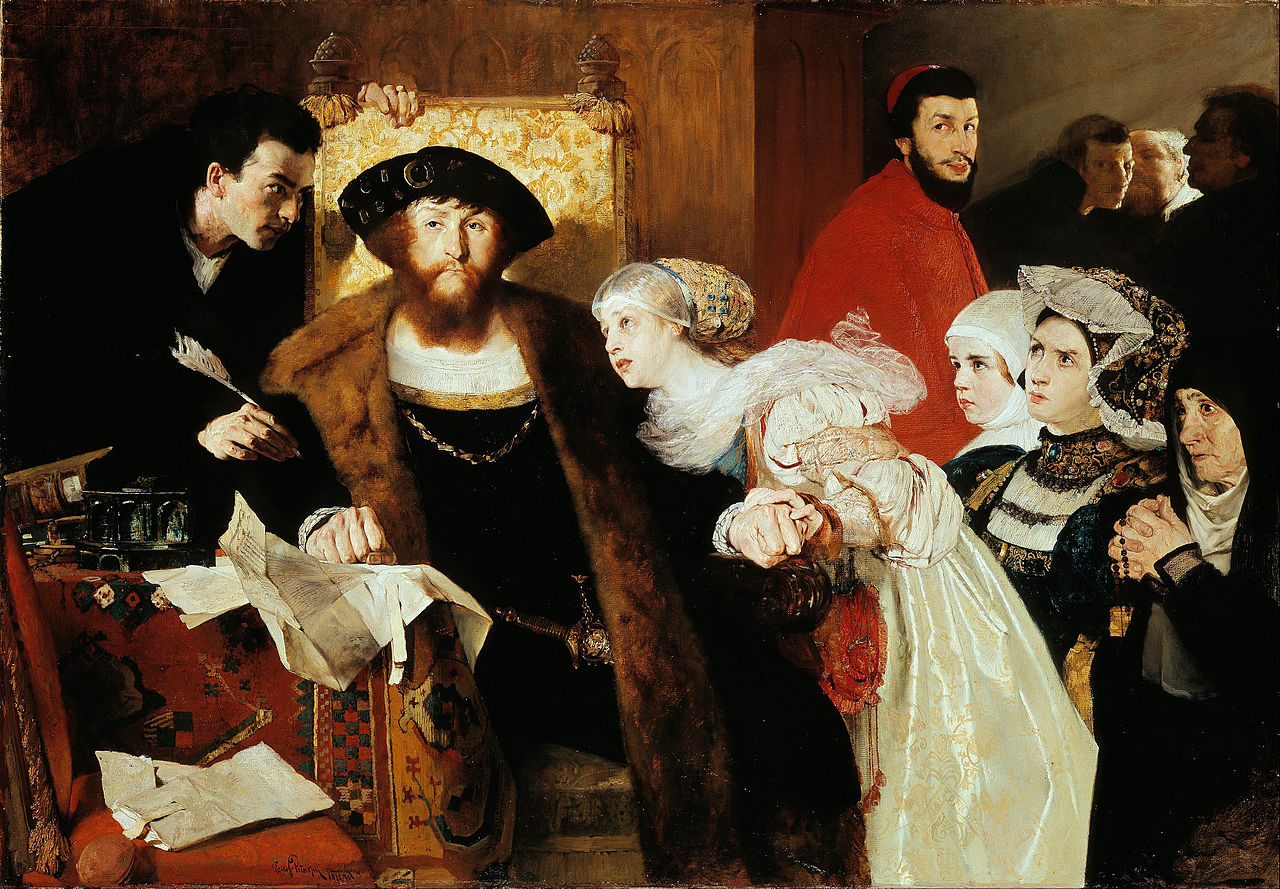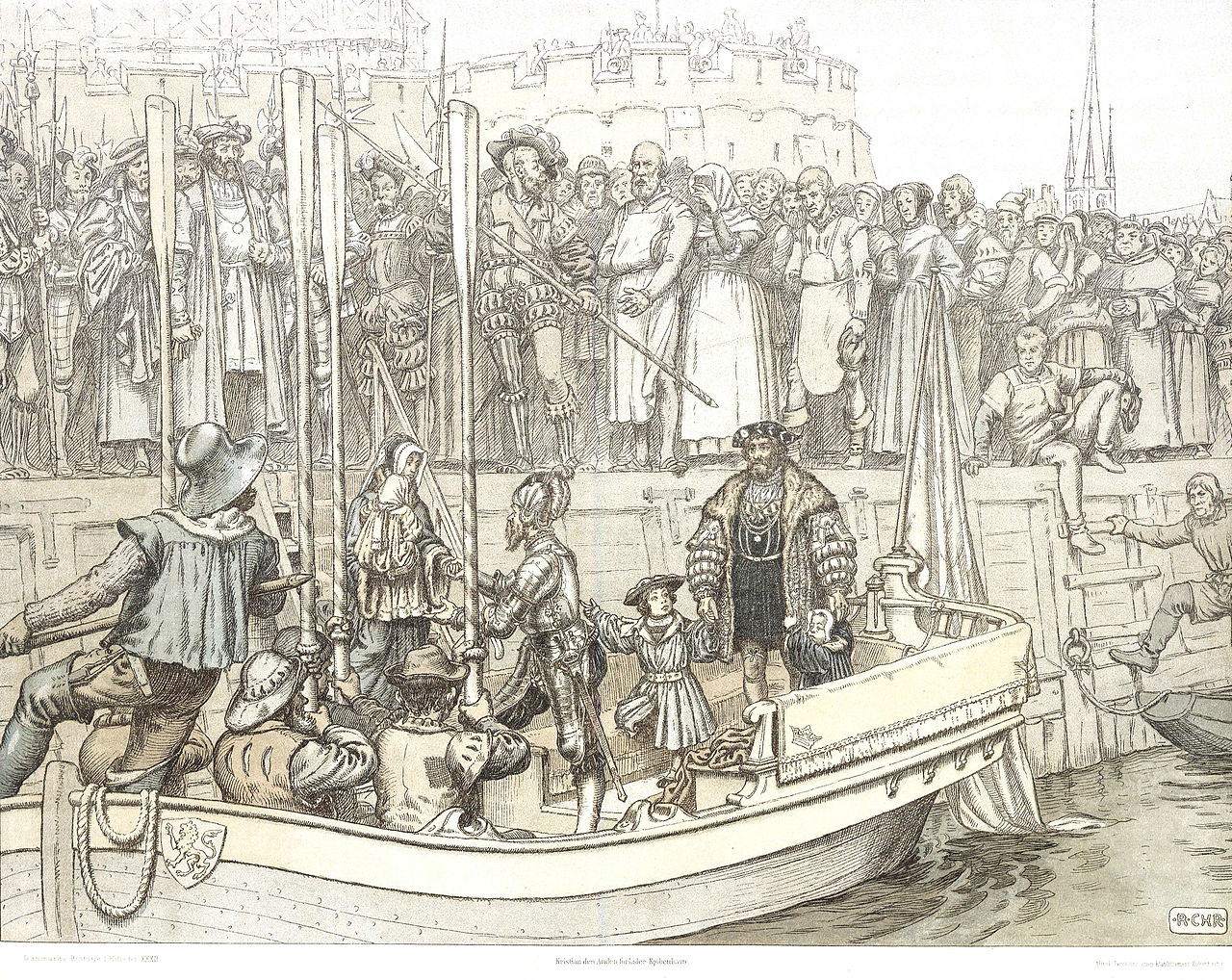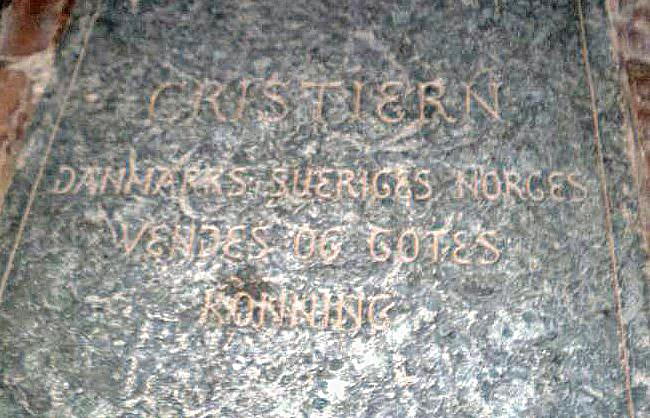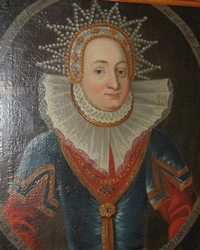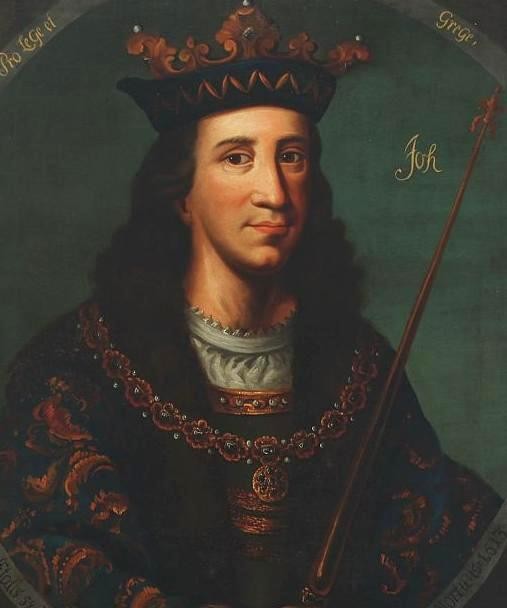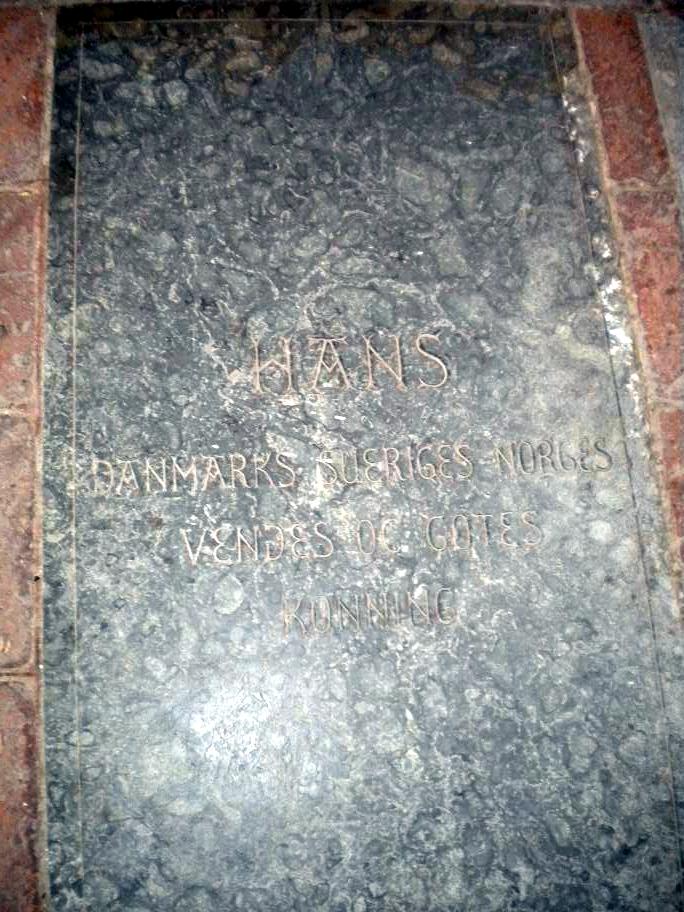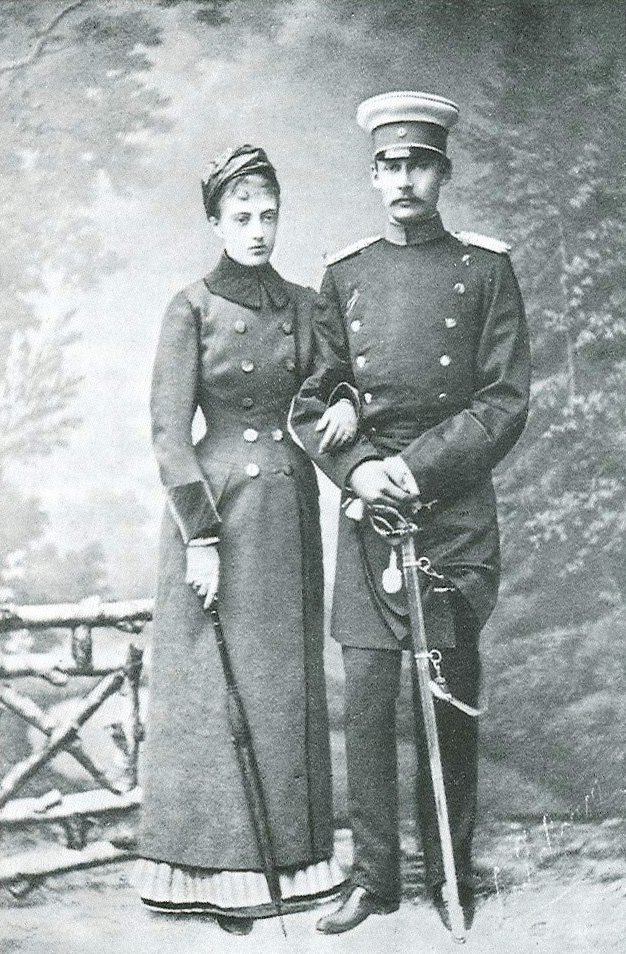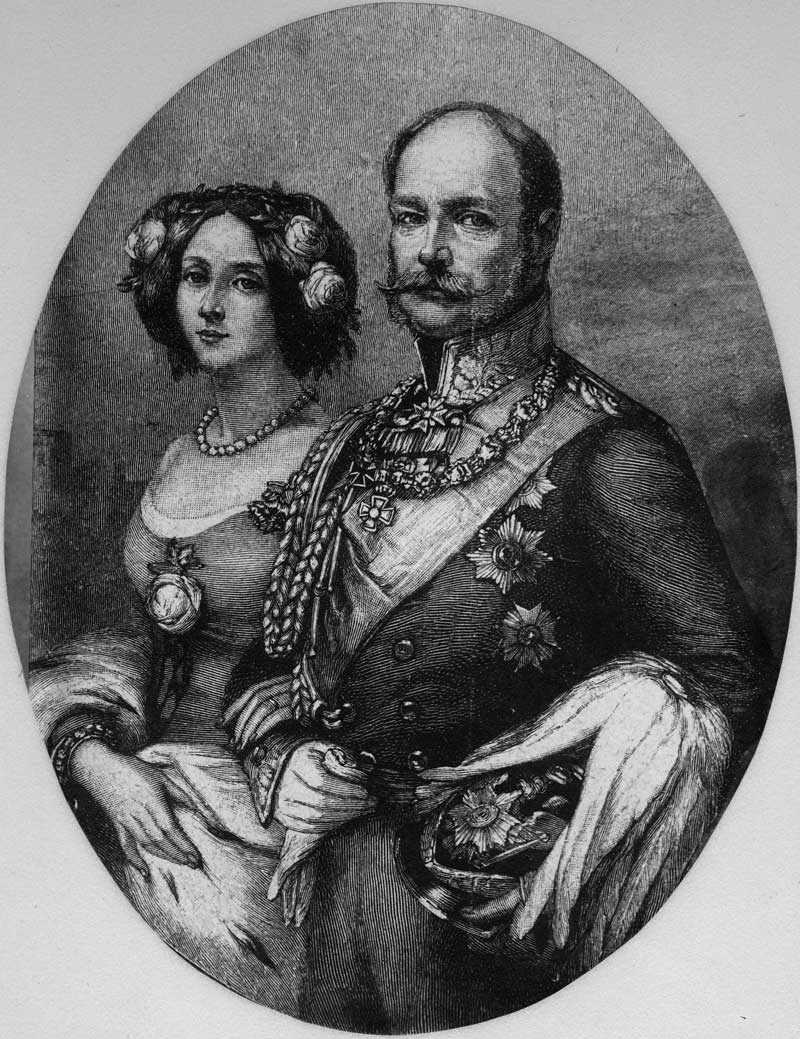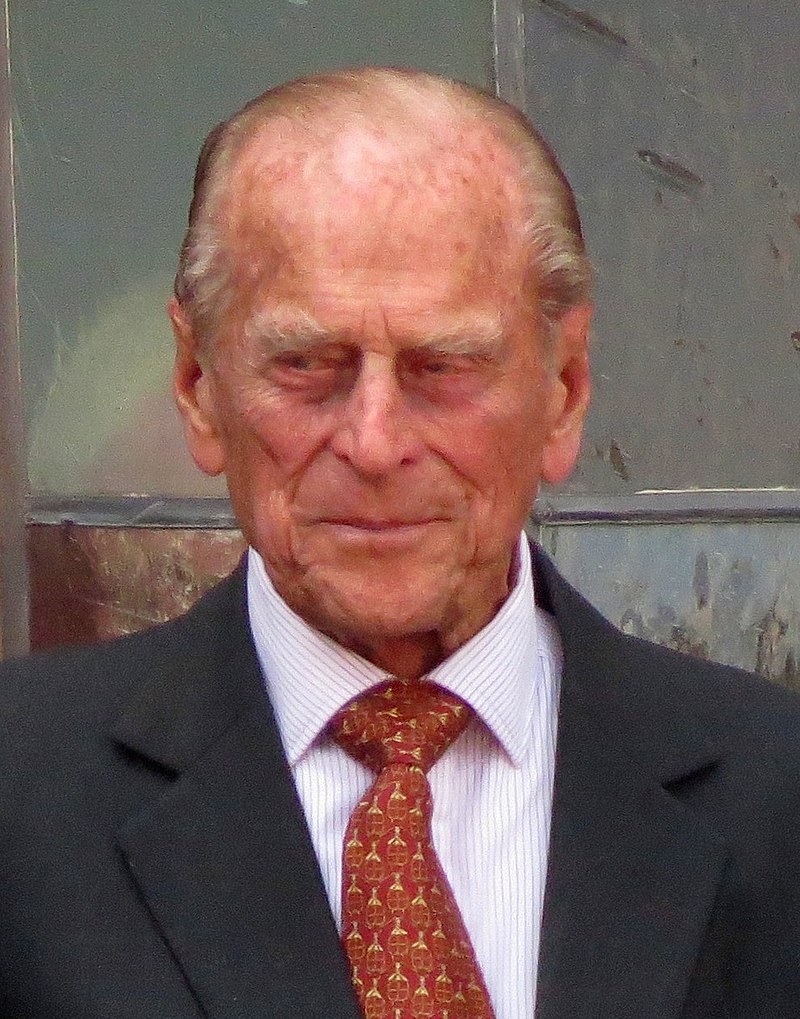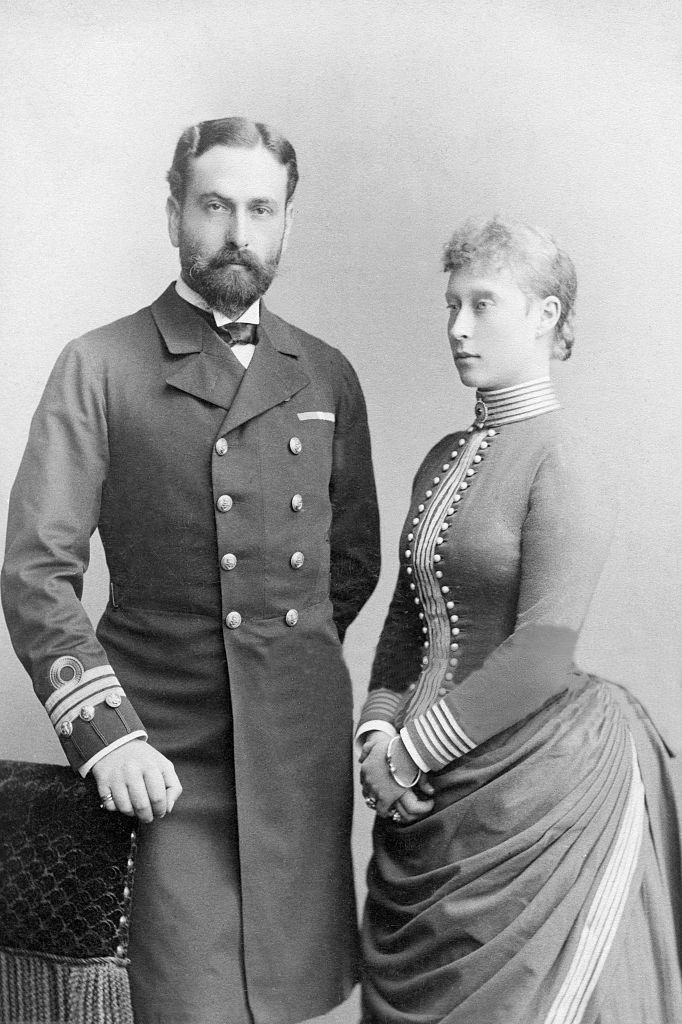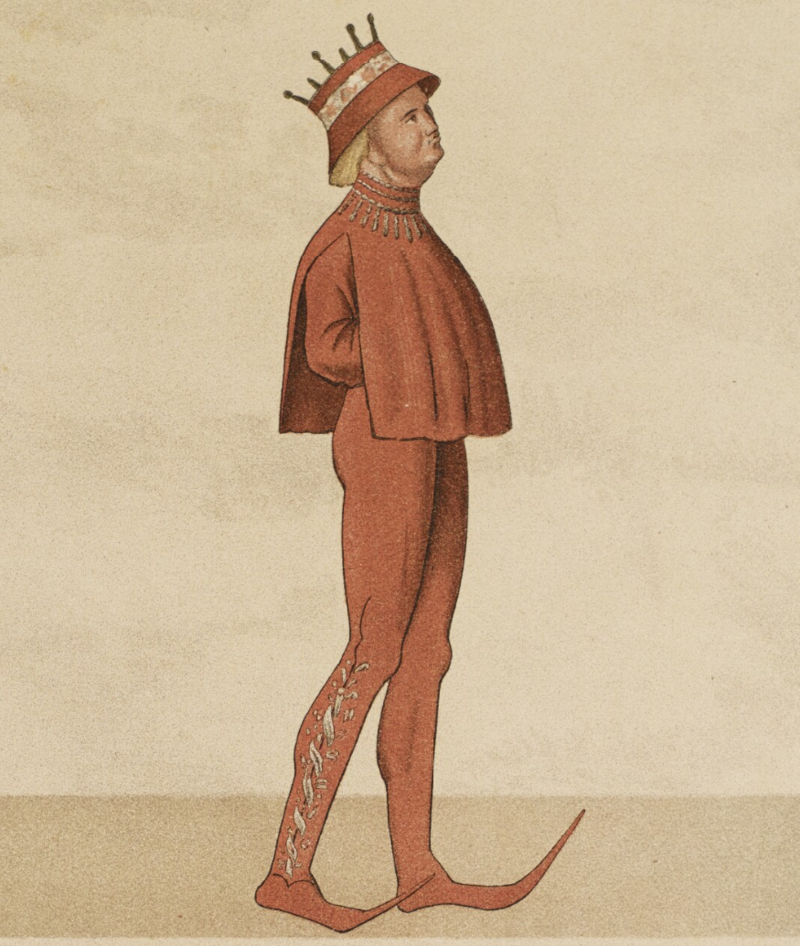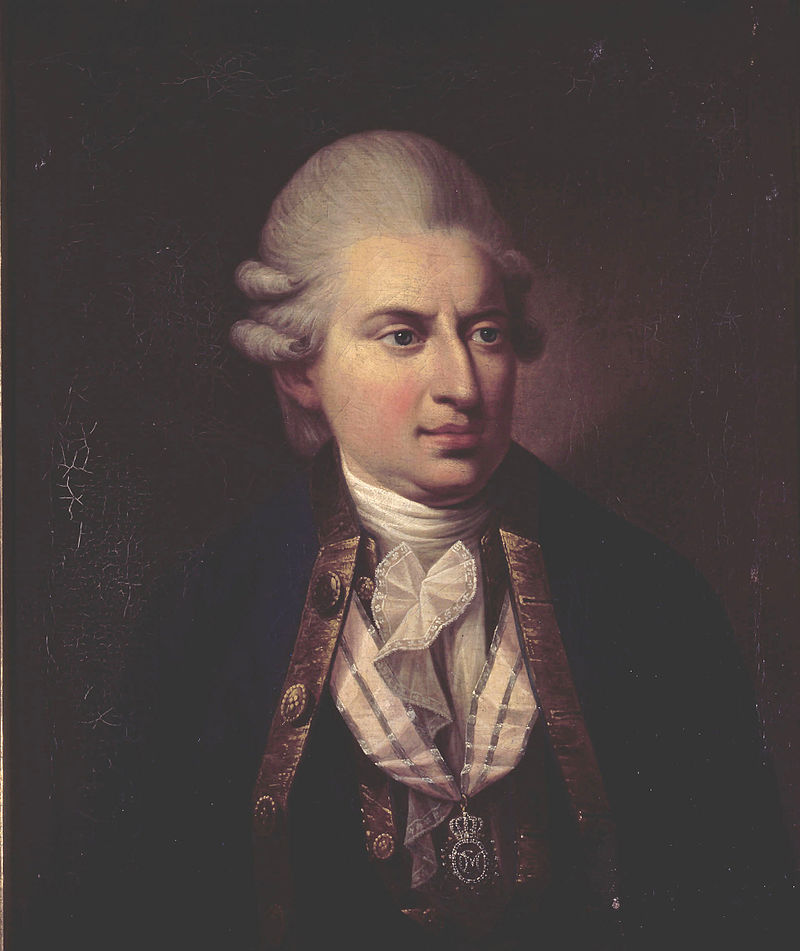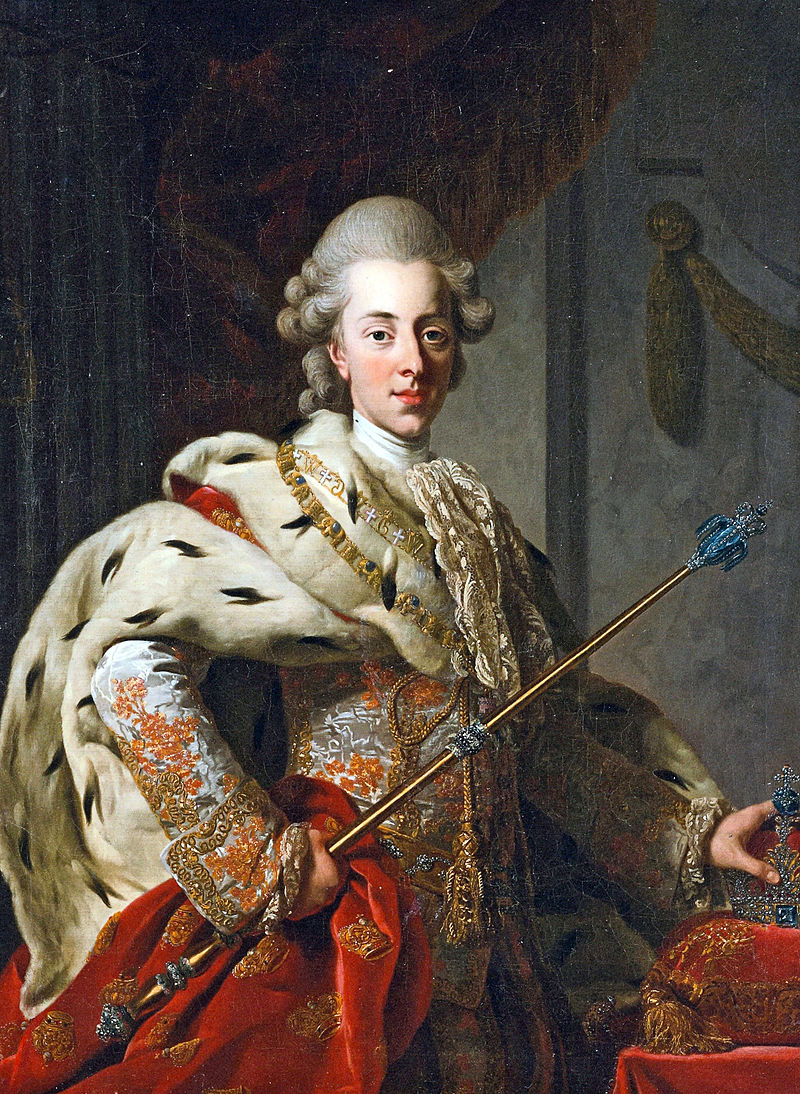by Susan Flantzer
© Unofficial Royalty 2021

Isabella of Austria, Queen of Denmark, Norway, and Sweden; Credit – Wikipedia
Isabella of Austria was the wife of Christian II, King of Denmark, Norway, and Sweden. She was born an Archduchess of Austria and an Infanta of Castile and Aragon, on July 18, 1501, in Brussels, Spanish Netherlands, now in Belgium. Isabella was the second of the four daughters and the third of the six children of Philip, Duke of Burgundy and Juana I, Queen of Castile and Aragon. Isabella’s maternal grandparents were King Ferdinand II of Aragon and Queen Isabella I of Castile. Her paternal grandparents were Maximilian I, Holy Roman Emperor and Mary, Duchess of Burgundy in her own right. Isabella’s brother was the powerful Charles V, Holy Roman Emperor who was also King of Spain. Catherine of Aragon, the first wife of King Henry VIII of England, was her maternal aunt, and Catherine and Henry VIII’s only surviving child, Queen Mary I of England was her first cousin.

Isabella on the right with her sister Eleanor and her brother Charles; Credit – Wikipedia
Isabella had five siblings:
- Eleanor of Austria, Queen of Portugal, Queen of France (1498 – 1558), married (1) King Manuel I of Portugal, had two children (2) King François I of France, no children
- Charles V, Holy Roman Emperor/Charles I, King of Spain (1500 – 1558), married Isabella of Portugal, had seven children including King Philip II of Spain
- Ferdinand I, Holy Roman Emperor (1503 – 1564), married Anna of Bohemia and Hungary, had fifteen children
- Mary of Austria, Queen of Bohemia and Hungary (1505 – 1558), married King Louis II of Hungary and Bohemia, no children
- Catherine of Austria, Queen of Portugal (1507 – 1578), married King João III of Portugal, had nine children who all predeceased their parents
Isabella’s father died in 1506 when she was five years old. In 1507, her paternal aunt Margaret of Austria became the guardian of Isabella and her siblings Eleanor, Charles, and Mary. Isabella’s mother Queen Juana I of Castile and Aragon was nicknamed “La Loca” due to a mental disability alleged by her father King Ferdinand II of Aragon and then her son Charles. In 1509, her father confined her in the Royal Palace in Tordesillas, Castile, now in Spain, until she died in 1555. Whether Juana suffered from a mental disability or whether she was the victim of a conspiracy plotted by her father and then by her son is still debated by historians.

Isabella, circa 1515; Credit – Wikipedia
On July 11, 1514, one week short of her 13th birthday, Isabella was married by proxy to 23-year-old Christian II, King of Denmark, Norway, and Sweden with Holy Roman Emperor Maximilian I, Isabella’s grandfather, standing in for Christian. Isabella remained in the Spanish Netherlands until the summer of 1515 when Erik Axelsson Valkendorf, Archbishop of Nidaros (in Norway) was sent to escort her to Copenhagen where Christian and Isabella were married in person on August 12, 1515. Around 1508, while on a visit to Norway, Christian II fell in love with Dyveke Sigbritsdatter and she became his mistress. Christian’s brother-in-law, the future Holy Roman Emperor Charles V, demanded that Dyveke Sigbritsdatter be sent away, but only to get a refusal from Christian. This created tension between Christian and Charles. Dyveke Sigbritsdatter remained Christian’s mistress until she died in 1517.
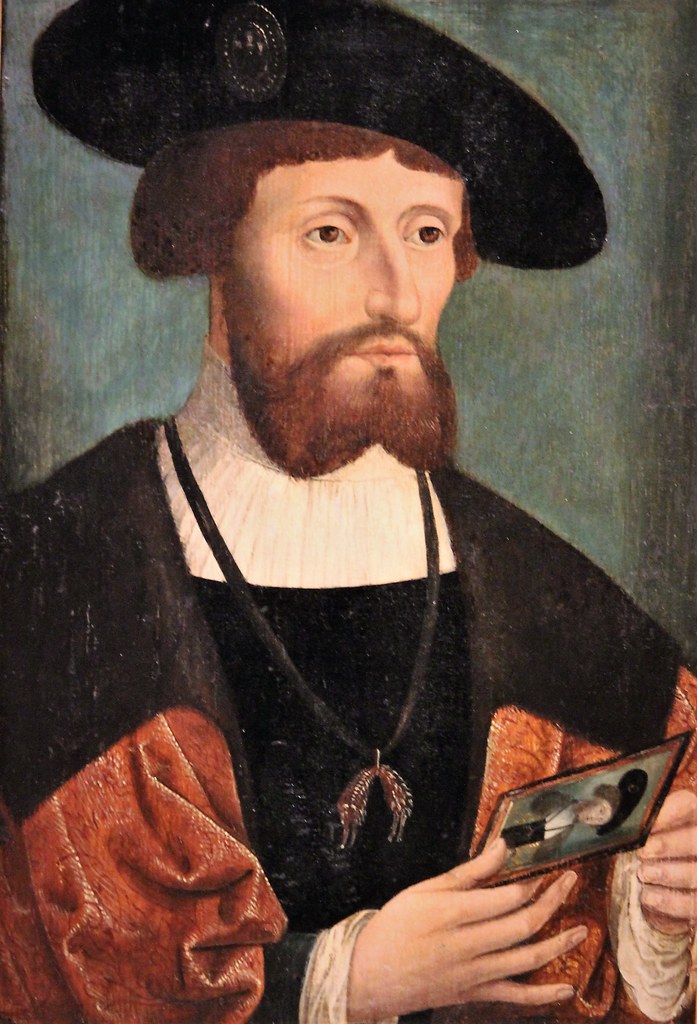
Christian II, King of Denmark, Norway, and Sweden; Credit- Wikipedia
Christian II and Isabella had five children but only three survived infancy and only their two daughters reached adulthood:
-
- Hans of Denmark (1518 – 1532), died at age fourteen
- Philip Ferdinand of Denmark (born and died 1519), twin of Maximilian, died shortly after birth
- Maximilian of Denmark (1519 – 1520), twin of Philip Ferdinand, died in infancy
- Dorothea of Denmark, Electress Palatine (1520 – 1580), married Friedrich II, Elector Palatine, no children
- Christina of Denmark, Duchess of Milan, Duchess of Lorraine (1521 – 1590), married (1) Francesco II Sforza, Duke of Milan, no children (2) François I, Duke of Lorraine, had one son and two daughters

Three children of Christian II and Isabella: Dorothea, Hans, and Christina; Credit – Wikipedia
When Christian II’s mistress Dyveke Sigbritsdatter died in 1517, Christian believed she had been poisoned by Danish nobleman Torben Oxe. Torben Oxe was tried and acquitted by the Danish State Council. However, Christian did not accept the verdict and had Oxe indicted by a lower justice-of-the-peace court. The verdict, as directed by King Christian II, was guilty and Torben Oxe was executed. Members of the Danish State Council strongly disapproved of what Christian had done. This act precipitated the division between the king and aristocracy that ultimately led to Christian being deposed.
In Sweden, with Christian’s permission, 82 people were either hanged or beheaded for heresy from November 9 – 10, 1520, in an incident called the Stockholm Bloodbath. Instead of cementing Christian’s control of the Swedish throne, the Stockholm Bloodbath led to him losing the Swedish throne. The remaining Swedish nobility, disgusted by the bloodbath, rose against Christian. On August 23, 1521, Christian was deposed as King of Sweden with the election of Gustav Vasa as Regent of Sweden. On June 6, 1523, Gustav Vasa was elected King of Sweden, the first monarch of the Swedish House of Vasa.
By 1523, the Danes also had enough of Christian II and a rebellion started. Christian was forced to abdicate by the Danish nobles and his paternal uncle Frederik, Duke of Schleswig and Holstein became King Frederik I of Denmark and Norway. Christian would have to go into exile but King Frederik I offered Isabella a dowager queen’s pension and an offer to stay in Denmark under his protection. Isabella wrote back to Frederik in Latin, saying “ubi rex meus, ibi regnum meum” – “where my king is, there is my kingdom”. On April 13, 1523, Christian, his wife Isabella, and their children left Denmark for the Spanish Netherlands, the territory of Isabella’s brother Charles V, Holy Roman Emperor.

Christian, Isabella, and their children leaving Denmark; Credit – Wikipedia
In the following years, Isabella and Christian tried, without success, to gain the support of their royal relatives to help recover their lost kingdom. Isabella and Christian stayed for a long time in Wittenberg with Christian’s maternal uncle Friedrich III, Elector of Saxony. Friedrich was an early defender of Martin Luther. He successfully protected Luther from the Holy Roman Emperor, the Pope, and other hostile figures. Friedrich did this not because of religious conviction but because he believed in a fair trial for any of his subjects and the rule of law. Both Christian and Isabella were interested in the teachings of Martin Luther. Isabella never converted but it appears Christian did convert for a while before reverting to Catholicism.
At the end of 1524, Isabella, Christian, and their children settled in Lier, Spanish Netherlands, now in Belgium. Isabella’s aunt Margaret of Austria provided them with a home and financial support. Even with the support, they had a difficult time, with many worries, and a lack of money. In the spring of 1525, Isabella became seriously ill. Isabella traveled with her husband to Zwijnaarde Castle outside Ghent, Spanish Netherlands, now in Belgium, in late 1525. Isabella died there on January 19, 1526, at the age of 24.
Isabella was originally buried in St. Peter’s Abbey in Ghent. In 1883, thanks to the efforts of the Danish government, Isabella’s remains and those of her son Hans, who died when he was fourteen-years-old, were transferred to St. Canute’s Cathedral in Odense, Denmark where they were reburied next to the remains of King Christian II.

Grave of Isabella of Austria; Credit – Wikipedia
This article is the intellectual property of Unofficial Royalty and is NOT TO BE COPIED, EDITED, OR POSTED IN ANY FORM ON ANOTHER WEBSITE under any circumstances. It is permissible to use a link that directs to Unofficial Royalty.
Kingdom of Denmark Resources at Unofficial Royalty
- Kingdom of Denmark Index
- Danish Orders and Honours
- Danish Royal Burial Sites: House of Oldenburg, 1448 – 1863
- Danish Royal Burial Sites: House of Schleswig-Holstein-Sonderburg-Glücksburg, 1863 – present
- Danish Royal Christenings
- Danish Royal Dates
- Danish Royal Residences
- Danish Royal Weddings
- Line of Succession to the Danish Throne
- Profiles of the Danish Royal Family
Works Cited
- Da.wikipedia.org. 2020. Elisabeth Af Habsburg. [online] Available at: <https://da.wikipedia.org/wiki/Elisabeth_af_Habsburg> [Accessed 24 December 2020].
- En.wikipedia.org. 2020. Isabella Of Austria. [online] Available at: <https://en.wikipedia.org/wiki/Isabella_of_Austria> [Accessed 24 December 2020].
- En.wikipedia.org. 2020. Joanna Of Castile. [online] Available at: <https://en.wikipedia.org/wiki/Joanna_of_Castile> [Accessed 24 December 2020].
- Flantzer, Susan. 2020. Christian II, King of Denmark, Norway, and Sweden. [online] Available at: <https://www.unofficialroyalty.com/christian-ii-king-of-denmark-norway-and-sweden/> [Accessed 24 December 2020].




